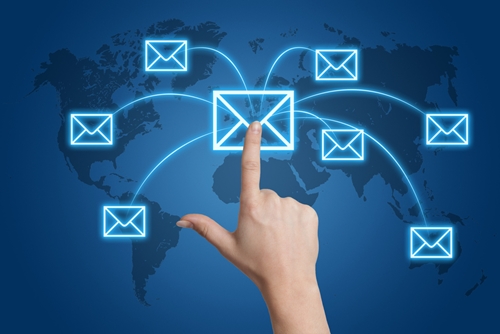
Customers are the lifeblood of companies in a variety of industries. Without consumers, many businesses would cease to exist. As a result, organizations are always looking for new and improved ways to increase their client base. The tried-and-true methods, however, can sometimes be just as – if not more – successful than those trendy tactics.
One example is email segmentation. Companies currently not using this practice could seriously benefit from utilizing this tool in the future. Let’s take a closer look at segmentation and the advantages it offers businesses.
 Separating their audience by multiple variables will help businesses improve their marketing efforts.
Separating their audience by multiple variables will help businesses improve their marketing efforts.What is email segmentation?
Audience members always appreciate an experience catered to their personal interests, desires and goals. Although companies may know this to be true, they still struggle to find ways to meet that expectation. One of the most overlooked marketing approaches is email segmentation, which allows businesses to divide their customers by key variables then send targeted messages based on those elements, according to Marketing Land.
An easy way to start is to divide customers by gender and location. This enables organizations to build content specific to that group of clients. From there, companies can separate people by essential information including age, purchase history, interest level and position in the sales funnel, HubSpot suggested.
While it may be a little time consuming, performing this task will benefit businesses in the long run. Let’s take a look at some examples of these gains:
Better use of split testing
Companies frequently try out their campaigns before sending them out to a larger audience. With segmentation, marketers can make better use of split – or A/B – testing, according to The Houston Chronicle. Utilizing groups that are responsive to earlier efforts will help businesses see which approaches work best. Organizations can send a different version of an advertisement to understand which form is better received and yields the intended results. Responses from both groups of people will assist marketing teams in developing a more streamlined method for future outreach.
Improved email reputation
While companies want their client base to be engaged with the products and services they’re offering, audience members prefer communication that is interesting and appealing to their tastes. When businesses send countless boring and unexciting messages, consumers quickly become disinterested in the content. As a result, these emails are either deleted without being opened or sent directly to a spam folder. On the other hand, by using segmentation on their email lists, organizations may witness an improved reputation among their customers. Clients are more willing to trust and open messages that are tailored to their individual passions and history, another HubSpot article suggested. By starting out on the right foot, businesses can ensure their consumers continue to open these emails to find information customized to their liking.
“Relevant content will help reduce unsubscribe rates.”
Reduced unsubscribe rates
If customers are happy with the emailed content they’re receiving on a normal basis, they’ll be less likely to cancel their email subscription. This is an important benefit for companies, as the loss of consumers often precedes decreased sales. Developing interesting, relevant and time-sensitive content helps organizations reduce their unsubscribe rate, while maintaining or increasing their revenue, according to All Business. In addition, email segmentation can improve businesses’ client retention rates, as people are less inclined to cut ties with an organization that treats their interests with such attention and respect.
Increased referrals
Customers who feel valued by the companies they subscribe to and purchase from tend to be more engaged in the material that comes their way. Furthermore, these consumers want their friends and family to know what good service looks like. A strong email reputation may help companies reduce their unsubscribe rates, but it will also aid in building a more active referral program. Loyal clients will attract even more attentive people, as long as the standard of interaction remains the same, if not better.
The importance of clean data
Although all of these benefits are well and good, they’re not worth anything if businesses don’t implement data hygiene practices. Companies can segment their lists all they want, but their marketing efforts will fall on deaf ears if the lists are incorrect or outdated. It’s crucial for organizations to regularly analyze and clean the information they have on file. This tactic will ensure all emails are delivered, regardless of whether or not they are opened. Good data hygiene can also save businesses from wasting money in the form of campaigns that never reach an audience. Strong data cleaning allows organizations to better segment their lists and engage with their audience.
Email segmentation is an important method for companies looking to increase their revenue and relationship with their customers. By separating consumers by multiple variables, businesses can target their marketing to people’s individual tastes and personalities. This practice will improve audience interaction, resulting in lower unsubscribe rates, increased referral rates and more comprehensive split-testing results. These practices, paired with data cleaning, can lead to improved success for organizations in the long run.









